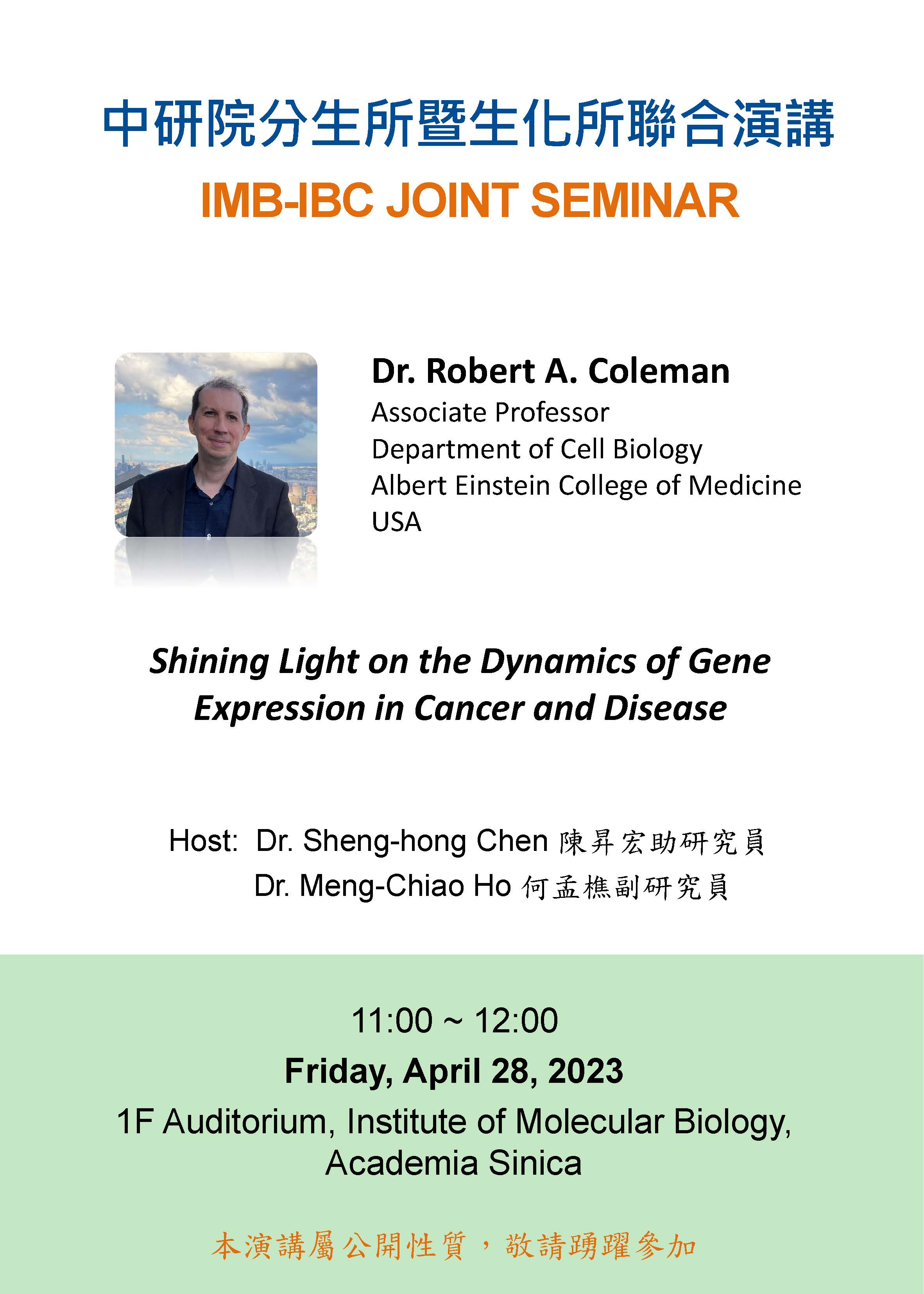2023-04-28 11:00 ~ 2023-04-28 12:00
地點: 分生所1樓演講廳
主講人: Robert A. Coleman博士
主講人背景: 美國埃爾伯特愛因斯坦醫學院細胞生物學研究所副教授
演講主持人: 陳昇宏助研究員與何孟樵副研究員
演講摘要:
Gene expression is thought to be a stochastic process marked by short periods (minutes) of intense activity or bursts of transcription interspersed between long intervals (>30 minutes to hours) of inactivity. During a burst, Transcription Factors (e.g. p53), Chromatin Remodelers (e.g. PBAF) and RNA Polymerase II rapidly cycle on and off the promoter to dynamically regulate transcriptional output of a gene. Many genes also display transcriptional memory whereby, after an initial stimulus, subsequent gene expression dynamics are enhanced to generate a faster and stronger transcriptional output. Transcriptional memory is often studied over hours or cell generations. Given their different timescales, it is not clear how transcriptional memory is regulated within the context of transcriptional bursting.
We will describe our efforts to use advanced live-cell multicolor single molecule imaging to dissect the molecular basis of transcriptional bursting. Remarkably, we find that transcription factors and chromatin remodelers dynamically cycle on and off the genome at discrete chromatin hubs. Chromatin remodeler cycling on chromatin hubs is regulated via interactions with a series of different epigenetic marks on histone tails. Disruption of these interactions with histone tails dysregulates chromatin remodeler cycling and transcription bursting dynamics. Furthermore, live-cell imaging of nascent transcription revealed that transcriptional bursts from the p21 gene contain multiple ON and OFF states that can be regulated by elevation of p53 levels. Distinct ON states are characterized by differences in burst duration and higher Pol II initiation rates. Importantly, the different ON states display memory effects that allow us to predict the likelihood of properties of future bursting events. Bursting memory persists up to 2 hours suggesting a stable inheritable promoter and chromatin architecture. Accordingly, bursting memory can be regulated by different stimuli and histone modifications. Overall our data uncover a new-found bursting property termed Short-Term Transcriptional Memory (STTM) that has the potential to fine-tune transcriptional output at the p21 gene.-Dr. Robert A. Coleman
洽詢人員: 劉小姐
洽詢電話: 27855696#2061
洽詢信箱: liukchun@gate.sinica.edu.tw

 中央研究院 生物化學研究所
中央研究院 生物化學研究所

 中央研究院 生物化學研究所
中央研究院 生物化學研究所
